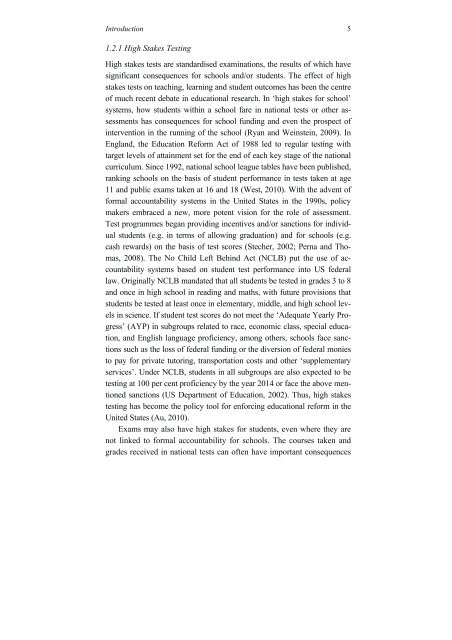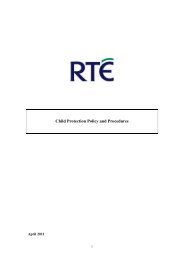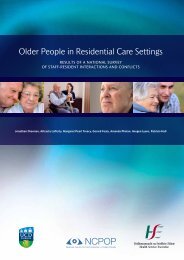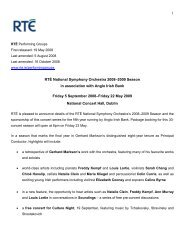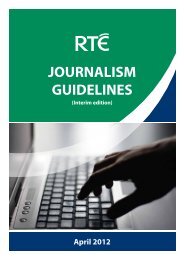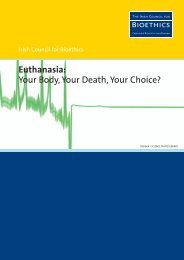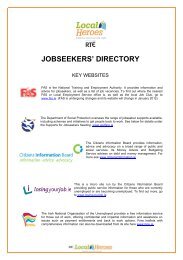From Leaving CertiFiCate to Leaving SChooL a Longitudinal Study ...
From Leaving CertiFiCate to Leaving SChooL a Longitudinal Study ...
From Leaving CertiFiCate to Leaving SChooL a Longitudinal Study ...
You also want an ePaper? Increase the reach of your titles
YUMPU automatically turns print PDFs into web optimized ePapers that Google loves.
Introduction 5<br />
1.2.1 High Stakes Testing<br />
High stakes tests are standardised examinations, the results of which have<br />
significant consequences for schools and/or students. The effect of high<br />
stakes tests on teaching, learning and student outcomes has been the centre<br />
of much recent debate in educational research. In ‘high stakes for school’<br />
systems, how students within a school fare in national tests or other assessments<br />
has consequences for school funding and even the prospect of<br />
intervention in the running of the school (Ryan and Weinstein, 2009). In<br />
England, the Education Reform Act of 1988 led <strong>to</strong> regular testing with<br />
target levels of attainment set for the end of each key stage of the national<br />
curriculum. Since 1992, national school league tables have been published,<br />
ranking schools on the basis of student performance in tests taken at age<br />
11 and public exams taken at 16 and 18 (West, 2010). With the advent of<br />
formal accountability systems in the United States in the 1990s, policy<br />
makers embraced a new, more potent vision for the role of assessment.<br />
Test programmes began providing incentives and/or sanctions for individual<br />
students (e.g. in terms of allowing graduation) and for schools (e.g.<br />
cash rewards) on the basis of test scores (Stecher, 2002; Perna and Thomas,<br />
2008). The No Child Left Behind Act (NCLB) put the use of accountability<br />
systems based on student test performance in<strong>to</strong> US federal<br />
law. Originally NCLB mandated that all students be tested in grades 3 <strong>to</strong> 8<br />
and once in high school in reading and maths, with future provisions that<br />
students be tested at least once in elementary, middle, and high school levels<br />
in science. If student test scores do not meet the ‘Adequate Yearly Progress’<br />
(AYP) in subgroups related <strong>to</strong> race, economic class, special education,<br />
and English language proficiency, among others, schools face sanctions<br />
such as the loss of federal funding or the diversion of federal monies<br />
<strong>to</strong> pay for private tu<strong>to</strong>ring, transportation costs and other ‘supplementary<br />
services’. Under NCLB, students in all subgroups are also expected <strong>to</strong> be<br />
testing at 100 per cent proficiency by the year 2014 or face the above mentioned<br />
sanctions (US Department of Education, 2002). Thus, high stakes<br />
testing has become the policy <strong>to</strong>ol for enforcing educational reform in the<br />
United States (Au, 2010).<br />
Exams may also have high stakes for students, even where they are<br />
not linked <strong>to</strong> formal accountability for schools. The courses taken and<br />
grades received in national tests can often have important consequences


